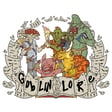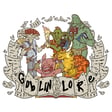
Episode 8: Color Pie a la Mode, Part I
Hello, Podwalkers, and welcome to the Goblin Lore Podcast!
In our eighth episode, Michelle Rapp (@BalefireStrix on Twitter) of Card Kingdom and The Loregoyfs! joins the guys to talk about how we can understand Magic: the Gathering's color pie through real-world art movements. After some brief shenanigans, Michelle takes the guys to art school, as they touch on artistic analogies for White, Blue, Black, and Red.
This is the first part of a two-part episode series, which will conclude in Episode 9.
Finally, the winners of the first 200 followers' giveaway is announced in this episode! At 300 followers on Twitter, we'll do our third giveaway, so keep the word of mouth going!
You can find the hosts on Twitter: Joe Redemann at @Fyndhorn, Hobbes Q. at @HobbesQ, and Alex Newman at @AlexanderNewm. Send questions, comments, thoughts, hopes, and dreams to @GoblinLorePod on Twitter or GoblinLorePodcast@gmail.com.
Opening and closing music by Wintergatan (@wintergatan). Logo art courtesy of Greg Staples, design by JDR.

